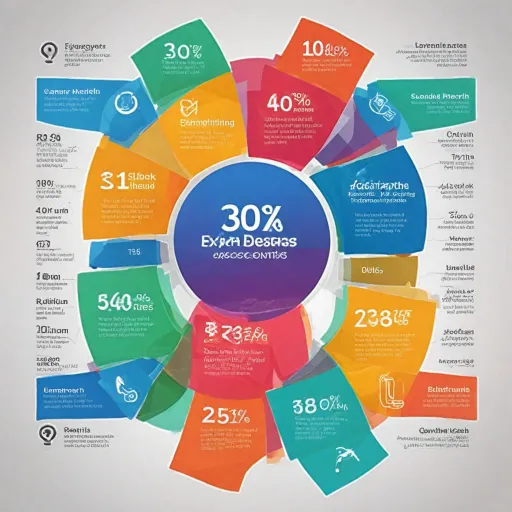
Defining DEIJB and its importance in HR
Building a Foundation for Equity and Belonging in HR
DEIJB stands for Diversity, Equity, Inclusion, Justice, and Belonging. In the context of human resources, these principles are more than just buzzwords—they are essential for creating workplaces where people from all backgrounds can thrive. The main content of DEIJB is about making sure every individual, regardless of their gender identity, race, privilege, or experiences, will feel valued and included. This is especially important in higher education, schools, and organizations that want to move forward and foster a sense of community.
When organizations prioritize diversity equity and inclusion justice, they are not only supporting anti racist practices but also ensuring that staff, students, and employees feel belong and are able to contribute their best work. Equity inclusion means addressing systemic barriers and making changes so that everyone has fair access to opportunities. Justice belonging goes a step further by focusing on correcting historical imbalances and making sure that everyone, regardless of their background, has a voice in decision-making.
- Diversity: Recognizing and valuing differences in people, such as culture, background, and experiences.
- Equity: Making sure resources and opportunities are distributed fairly, considering the unique needs of each person.
- Inclusion: Creating an environment where everyone feels welcomed and respected.
- Justice: Addressing and correcting unfair practices and policies.
- Belonging: Ensuring that all individuals feel they are a valued part of the community.
For organizations, the work needed to embed DEIJB diversity inclusion into their culture is ongoing. It requires commitment from leadership and staff, as well as a willingness to view challenges from multiple perspectives. When people feel belong, they are more likely to engage, innovate, and stay with the organization. This is why DEIJB is not just a moral imperative but also a strategic advantage for any workplace.
Understanding the cultural dynamics in AI for human resources is crucial for making progress in this area. For a deeper look at how these dynamics shape inclusive workplaces, you can explore this resource on cultural dynamics in AI for HR.
As we continue to integrate artificial intelligence into HR processes, it is important to keep these principles at the forefront. The next sections will explore how AI impacts DEIJB in recruitment, the risks of bias in algorithms, and practical steps for fostering inclusion belonging in the workplace.
How artificial intelligence impacts DEIJB in recruitment
AI’s Role in Shaping Equitable Recruitment
Artificial intelligence is changing how organizations approach diversity, equity, inclusion, justice, and belonging (DEIJB) in recruitment. By automating parts of the hiring process, AI can help reduce some human biases, but it also brings new challenges. The goal is to make sure that every candidate, regardless of background, gender identity, or privilege, has a fair chance to join the workforce. This is especially important in higher education, where students and staff expect a community that values equity inclusion and social justice.
- Data-driven decisions: AI systems analyze large volumes of candidate data, which can help identify patterns that support diversity equity and inclusion justice. However, if the data reflects past biases, the AI may unintentionally reinforce them.
- Wider talent pool: AI-powered tools can reach candidates from different backgrounds, schools, and experiences, helping organizations move forward in building a more inclusive workforce.
- Reducing bias: When designed thoughtfully, AI can help minimize bias in resume screening and interview scheduling, making sure that people from underrepresented groups will feel more included in the process.
Despite these benefits, there are concerns that AI might overlook the unique experiences and perspectives that candidates bring. For example, if an algorithm is not regularly updated, it may not recognize the value of anti racist work or community involvement. This can impact the sense belonging and inclusion belonging that organizations strive for.
Organizations need to be aware of the work needed to ensure their AI systems support DEIJB diversity and do not undermine it. The current view on DEI in the workplace shows that ongoing attention is required to keep equity and justice at the center of recruitment strategies. Making sure that staff and candidates feel belong and are valued is not just a policy—it’s a commitment to real change.
Bias in AI algorithms and its effect on workplace diversity
Recognizing and Addressing Bias in AI-Driven Recruitment
Artificial intelligence is transforming how organizations approach diversity, equity, and inclusion in recruitment. However, the use of AI algorithms also brings the risk of reinforcing existing biases, which can impact workplace diversity and the sense of belonging among staff and candidates. When AI systems are trained on historical data, they may unintentionally replicate patterns of privilege and exclusion, making it harder for people from underrepresented groups to feel they belong or to access equitable opportunities.
- Bias in Data: AI models often learn from data that reflects past decisions. If previous recruitment favored certain demographics, the algorithm may continue to prioritize those groups, limiting diversity and inclusion justice.
- Impact on Equity and Inclusion: Biased AI can affect not just hiring, but also promotions, performance reviews, and even the way staff feel about their workplace. This can undermine efforts to build an inclusive community where everyone, including students and staff in higher education, will feel valued and included.
- Transparency and Accountability: Making sure AI systems are transparent is crucial for equity inclusion. Organizations need to regularly audit their algorithms, involve diverse teams in development, and listen to the experiences of those impacted by AI-driven decisions.
For example, in the context of AI-powered talent management systems, it is essential to consider how these tools can either advance or hinder DEIJB diversity goals. By understanding the work needed to identify and reduce bias, HR professionals can move forward in creating a more inclusive and anti-racist workplace culture.
Ultimately, addressing bias in AI is about more than compliance. It is about fostering a sense of belonging, supporting social justice, and ensuring that every member of the organization—regardless of gender identity or background—can thrive. This commitment to justice belonging and diversity equity is foundational for any community or school that wants to be truly inclusive.
Ensuring equity and justice through transparent AI systems
Building Trust Through Transparent AI in HR
Transparency is a cornerstone when using artificial intelligence in human resources, especially for advancing equity and justice. When people understand how AI-driven decisions are made, it helps foster a sense of belonging and trust among staff and candidates. This is crucial for creating an inclusive and anti-racist work environment where everyone, regardless of gender identity or background, will feel valued.
AI systems can help identify and reduce privilege-based disparities, but only if their processes are open to scrutiny. For example, if a school or higher education institution uses AI to screen applicants, making sure the criteria and data sources are clear allows students and staff to view the process as fair. This transparency supports diversity, equity, and inclusion justice by ensuring that no group is unfairly advantaged or disadvantaged.
Key Elements of Transparent AI Systems
- Explainability: AI decisions should be understandable to non-technical users. When staff and candidates can see why a decision was made, it helps them feel included and respected.
- Accessible Policies: Clear privacy policies and documentation about how data is used support community trust and make it easier for people to raise concerns if they feel excluded.
- Regular Audits: Ongoing reviews of AI systems help ensure they continue to support equity inclusion and do not reinforce existing biases. This work is needed to keep moving forward with DEIJB diversity goals.
By prioritizing transparency, organizations can create a more inclusive and just workplace. This approach not only supports social justice but also helps everyone feel they belong, regardless of their experiences or background. In the end, transparent AI is about making sure every voice in the community is heard and valued, supporting the broader mission of diversity inclusion and justice belonging in the workplace.
Fostering inclusion and belonging with AI-driven HR tools
Building a Culture Where Everyone Feels They Belong
When it comes to fostering inclusion and belonging in human resources, artificial intelligence can be a powerful ally. AI-driven HR tools are increasingly used to help organizations create a sense of belonging for all staff, students, and community members. These tools can help identify gaps in diversity, equity, and inclusion (DEIJB) efforts, making sure that everyone—regardless of gender identity, privilege, or background—will feel seen and valued at work or in higher education settings.
- Personalized Experiences: AI can analyze employee feedback and experiences to suggest tailored actions that promote inclusion justice and equity inclusion. This helps HR teams address the unique needs of people from various backgrounds, ensuring that no one is left out.
- Monitoring Belonging: AI systems can track engagement and sense belonging across different groups, highlighting where staff or students may not feel included. This data-driven approach supports ongoing change and improvement in the workplace or school community.
- Reducing Barriers: By identifying patterns of exclusion, AI can help organizations move forward with anti racist and social justice initiatives. This is crucial for making sure that diversity inclusion and justice belonging are not just buzzwords, but real outcomes.
It’s important to remember that while AI can support DEIJB diversity efforts, the work needed to build an inclusive culture still relies on human commitment. AI tools should be used to amplify voices, not replace them. Organizations must also consider privacy policy implications when collecting and analyzing sensitive data related to equity and inclusion.
Ultimately, integrating AI into HR processes can help create a more inclusive, equitable, and supportive environment. When people feel they belong, they are more likely to thrive, contribute, and help the community move forward together.
Best practices for integrating DEIJB principles in AI for HR
Building a Foundation for Inclusive AI in HR
Integrating DEIJB principles into artificial intelligence for human resources requires a thoughtful approach. It is not just about technology, but about making sure people from all backgrounds feel they belong and are valued. When organizations focus on diversity, equity, inclusion, justice, and belonging, they move forward as a community, creating a workplace where everyone can thrive.
Key Steps for Responsible AI Implementation
- Assess Current Systems: Begin by reviewing existing HR processes and AI tools. Identify areas where bias or privilege may exist, especially in recruitment or promotion decisions. This is crucial for higher education institutions, schools, and workplaces alike.
- Engage Diverse Voices: Involve staff, students, and community members with different experiences and perspectives. Their input helps shape AI systems that reflect the real diversity of the workforce and student body.
- Prioritize Transparency: Make sure the logic behind AI decisions is clear. This builds trust and allows people to view and challenge outcomes, supporting equity and justice in every decision.
- Regularly Audit for Bias: Conduct ongoing reviews of AI outputs to detect and address any patterns that may harm diversity, inclusion, or equity. This work is needed to ensure anti-racist and inclusive practices are upheld.
- Provide Training: Offer education on DEIJB, social justice, and the impact of AI on equity inclusion. This helps staff and leaders understand how to use technology responsibly and make everyone feel they belong.
- Protect Privacy: Respect privacy policy requirements and safeguard sensitive data, such as gender identity or background information. This is essential for building a sense of belonging and trust.
Creating Lasting Change
Organizations that embed DEIJB diversity principles into their AI-driven HR tools foster a more inclusive and equitable environment. By listening to people, valuing different experiences, and making sure everyone will feel included, companies and schools can create a culture where diversity equity and inclusion justice are not just goals, but everyday realities. The work needed to achieve this is ongoing, but it is essential for building a truly inclusive community where all can feel belong.












